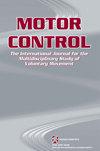顶级空手道运动员的灵知功能水平——一项初步研究。
IF 0.9
4区 医学
Q4 NEUROSCIENCES
引用次数: 0
摘要
高质量的感官知觉和身体图式(躯体诊断)是运动表现的重要方面。本研究比较了36名竞技空手道运动员和32名普通人群参与者的立体感、身体结构和运动感。立体认知Petrie测试、两项身体方案测试和三项运动感觉测试作为结果测量工具。在优势手(p = .389)和非优势手(p = .791)的立体认知Petrie测试中没有发现显著差异,在动觉测试中也没有发现显著差异(优势手,p = .661和非优势手,p = .051)。空手道运动员在身体方案测试中,即拳头宽度估计(p = 0.024)和肩宽估计(p = 0.019),以及在空手道特异性运动感觉测试中,即单拳(p = 0.010)和三拳(p = 0.001)表现明显更好。这项研究证实,竞技空手道运动员在进行快速动态动作时,与一般人群相比,有更好的躯体诊断和准确性。本文章由计算机程序翻译,如有差异,请以英文原文为准。
Levels of Gnostic Functions in Top Karate Athletes-A Pilot Study.
High-quality sensory perception and body scheme (somatognosis) are important aspects for sport performance. This study compares stereognosis, body scheme, and kinesthesia in a group of 36 competitive karate athletes against a control group of 32 general population participants. The stereognosis Petrie test, two body scheme tests, and three kinesthesia tests served as outcome measurement tools. No significant difference was found in the stereognosis Petrie test, for the dominant (p = .389) or the nondominant (p = .791) hand, nor in the kinesthesia test (dominant, p = .661 and nondominant, p = .051). Karate athletes performed significantly better in the body scheme tests, that is, fist width estimation (p = .024) and shoulder width estimation (p = .019), as well as in karate-specific kinesthesia tests, that is, single punch (p = .010) and triple punch (p = .001). This study confirms competitive karate athletes have significantly better somatognosis, and better accuracy when performing quick dynamic movements compared with the general population.
求助全文
通过发布文献求助,成功后即可免费获取论文全文。
去求助
来源期刊

Motor Control
医学-神经科学
CiteScore
1.80
自引率
9.10%
发文量
48
审稿时长
>12 weeks
期刊介绍:
Motor Control (MC), a peer-reviewed journal, provides a multidisciplinary examination of human movement across the lifespan. To keep you abreast of current developments in the field of motor control, it offers timely coverage of important topics, including issues related to motor disorders. This international journal publishes many types of research papers, from clinical experimental to modeling and theoretical studies. These papers come from such varied disciplines as biomechanics, kinesiology, neurophysiology, neuroscience, psychology, physical medicine, and rehabilitation.
Motor Control, the official journal of the International Society of Motor Control, is designed to provide a multidisciplinary forum for the exchange of scientific information on the control of human movement across the lifespan, including issues related to motor disorders.
Motor Control encourages submission of papers from a variety of disciplines including, but not limited to, biomechanics, kinesiology, neurophysiology, neuroscience, psychology, physical medicine, and rehabilitation. This peer-reviewed journal publishes a wide variety of types of research papers including clinical experimental, modeling, and theoretical studies. To be considered for publication, papers should clearly demonstrate a contribution to the understanding of control of movement.
In addition to publishing research papers, Motor Control publishes review articles, quick communications, commentaries, target articles, and book reviews. When warranted, an entire issue may be devoted to a specific topic within the area of motor control.
 求助内容:
求助内容: 应助结果提醒方式:
应助结果提醒方式:


